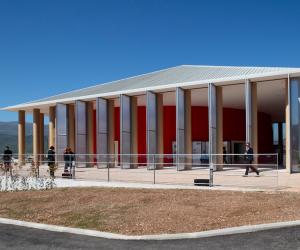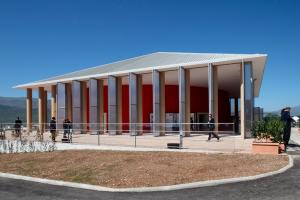
 Speaker
SpeakerShigeru Ban (born 1957 in Tokyo) is an accomplished Japanese and international architect, most famous for his innovative work with paper, particularly recycled cardboard paper tubes used to quickly and efficiently house disaster victims.
At the age of 48, Ban won the 40th annual Thomas Jefferson Medal in Architecture in 2005 from the University of Virginia in Charlottesville. He has also been profiled by Time magazine in their projection of 21st-century innovators in the field of architecture and design. Ban has become one of the forerunning Japanese architects who embrace the combination of Western and Eastern building forms and methods.
He fits well into the category of “ecological architects” but he can also make solid claims for being modernist, a Japanese experimentalist and a rationalist. “I don’t like waste” is an apt quote from Ban, summing up his philosophy, known as “paper architecture”. Ban’s work with paper and other materials is heavily based on principles of sustainability.
Ban is attracted to using paper because it is low-cost, low-tech, recyclable, replaceable and because it produces very little waste. He was the first architect in Japan to construct a building primarily out of paper and required special approval for his building to pass Japan’s building code.
In addition to the Ban’s ecological awareness, there is a humanitarian aspect to his work too. As a result of this, Ban’s DIY Refugee shelters (used in Japan after the Kobe earthquake, as well as in Turkey, Rwanda and around the world) are very popular and effective for low-cost disaster relief-housing.
